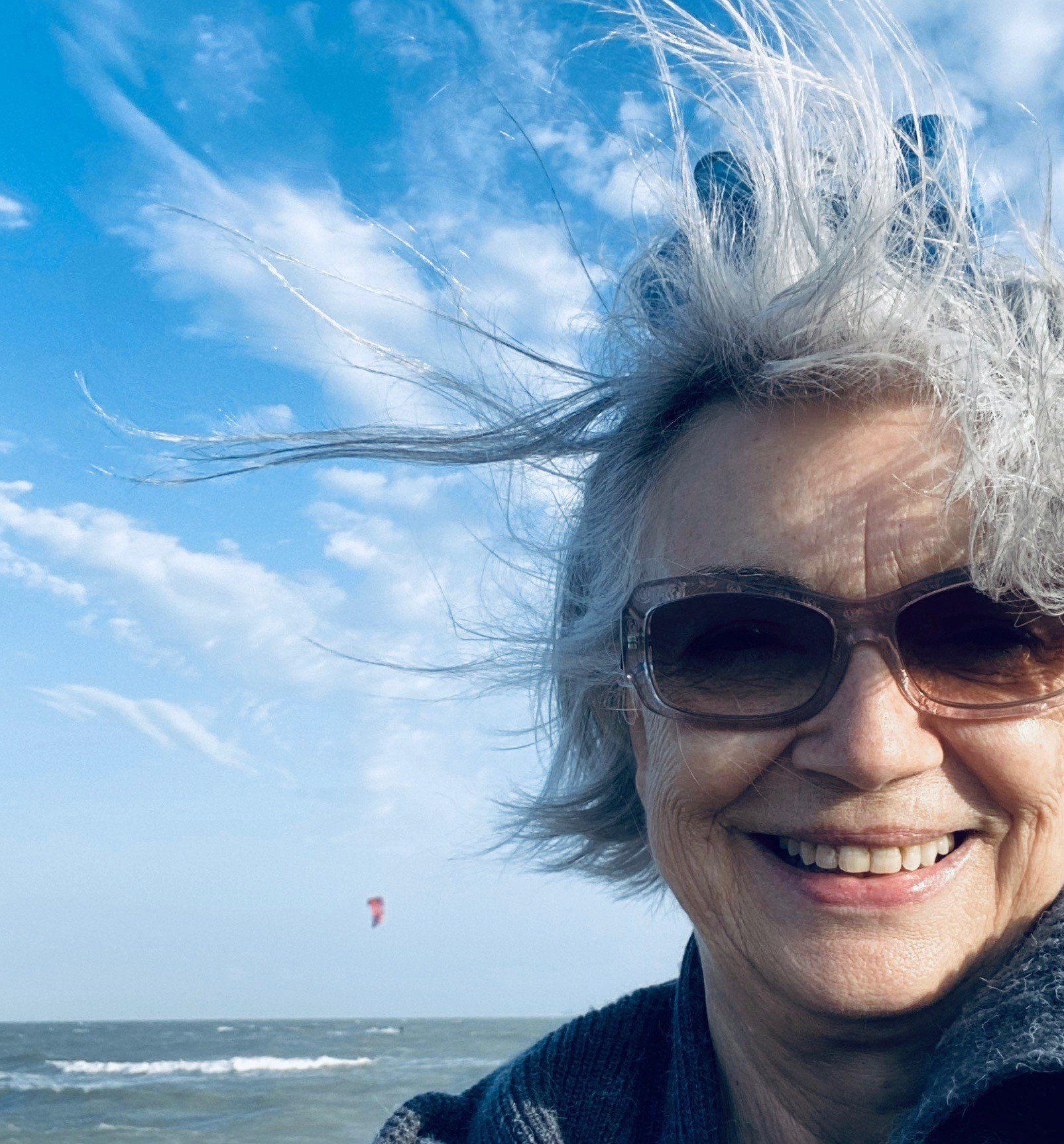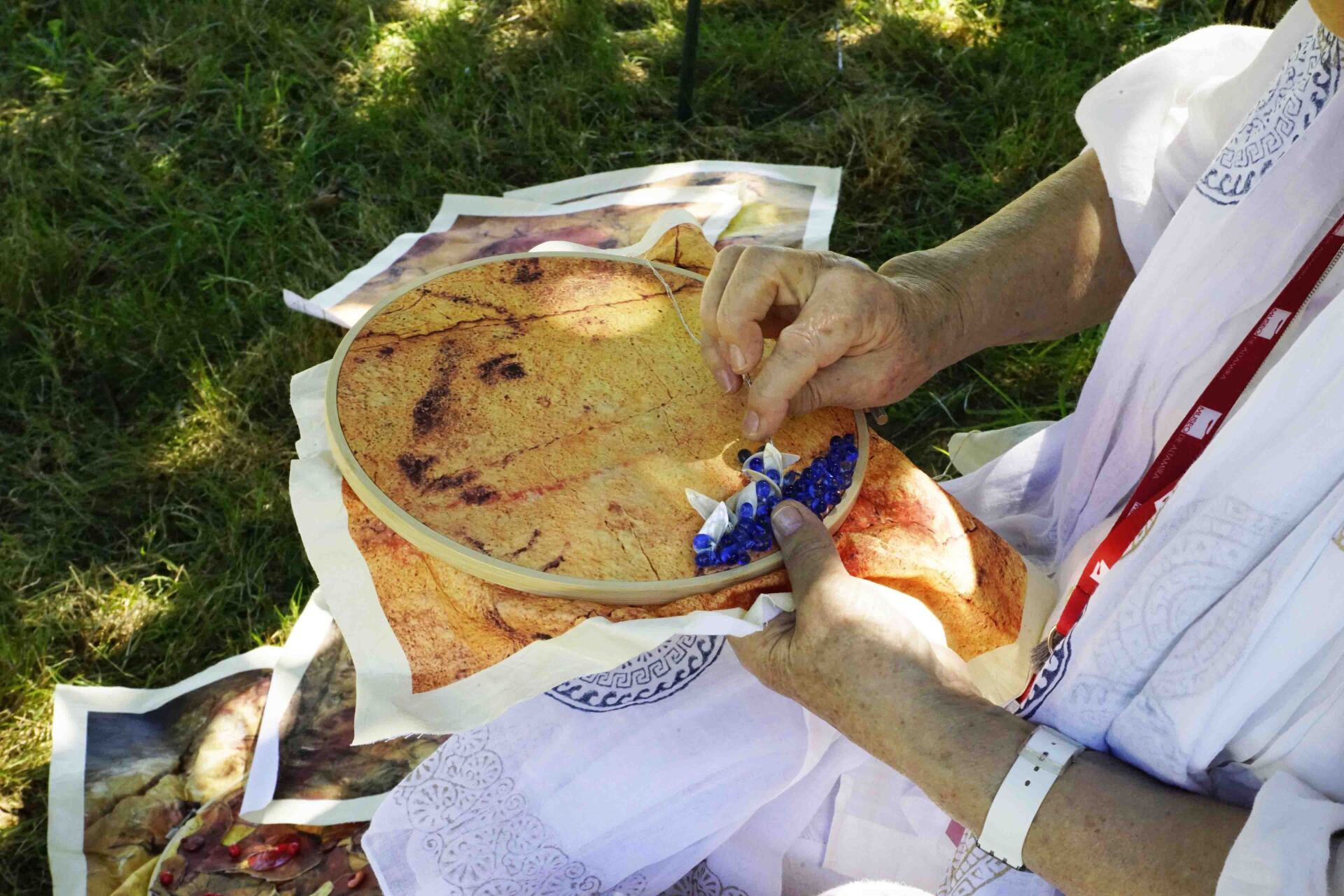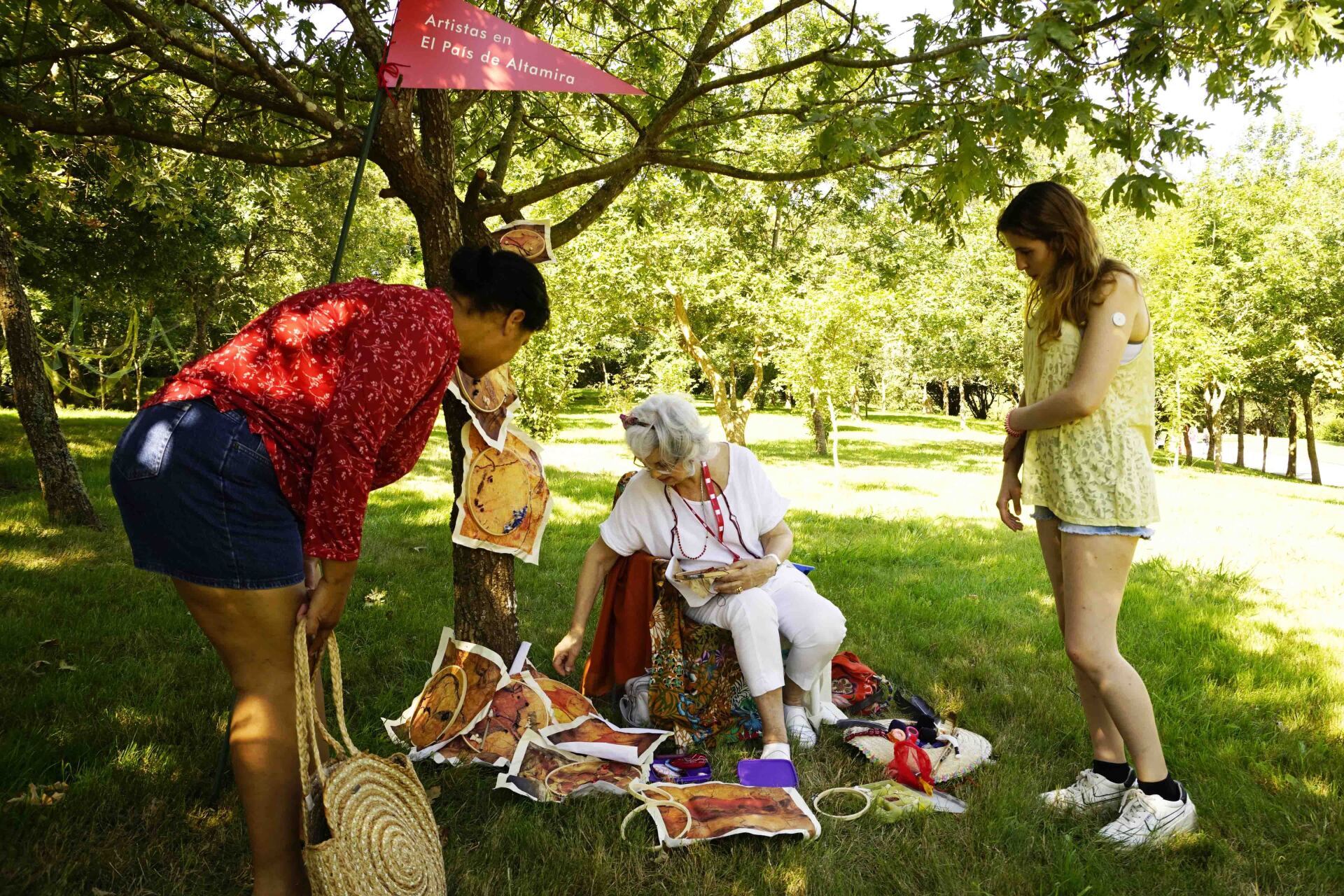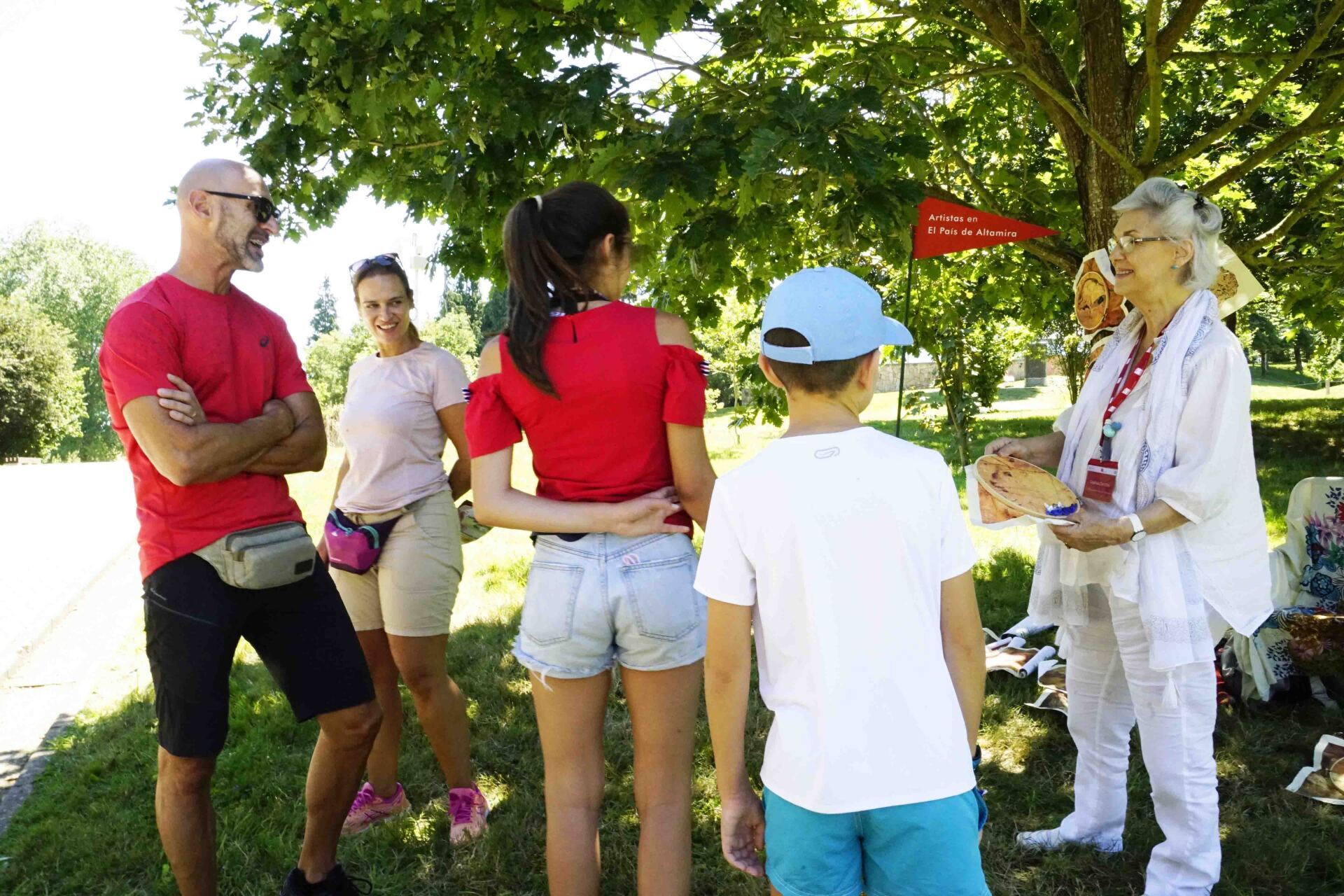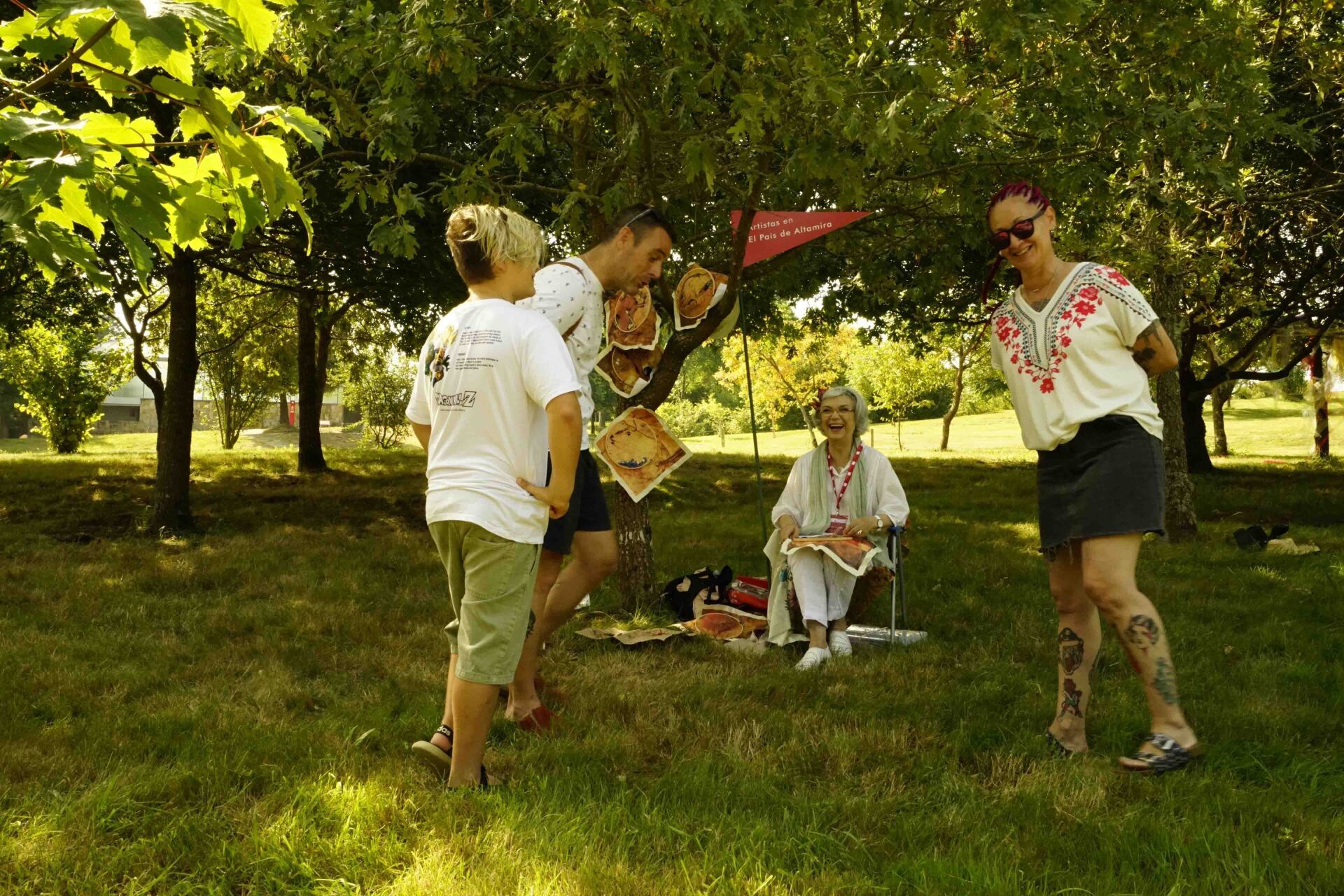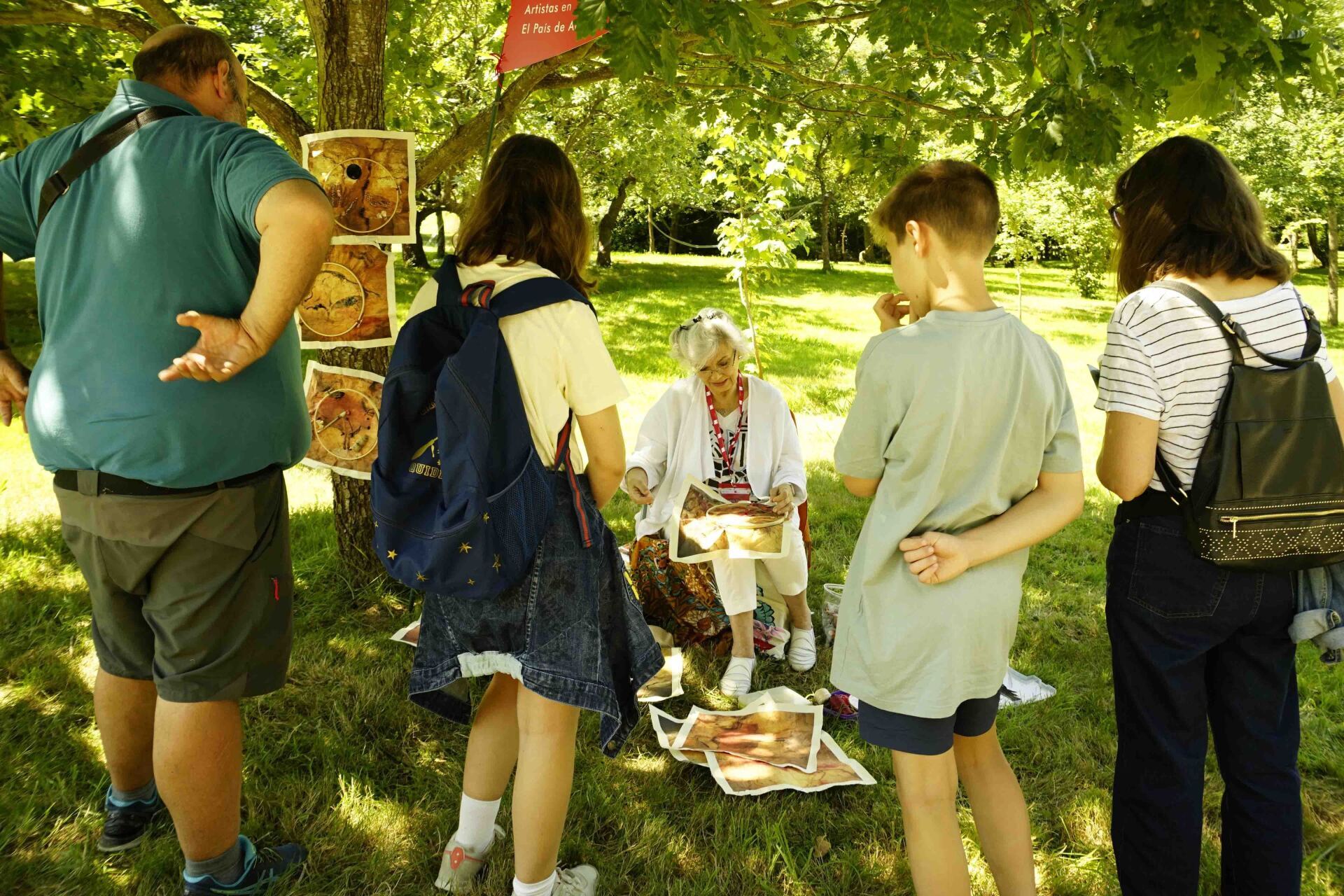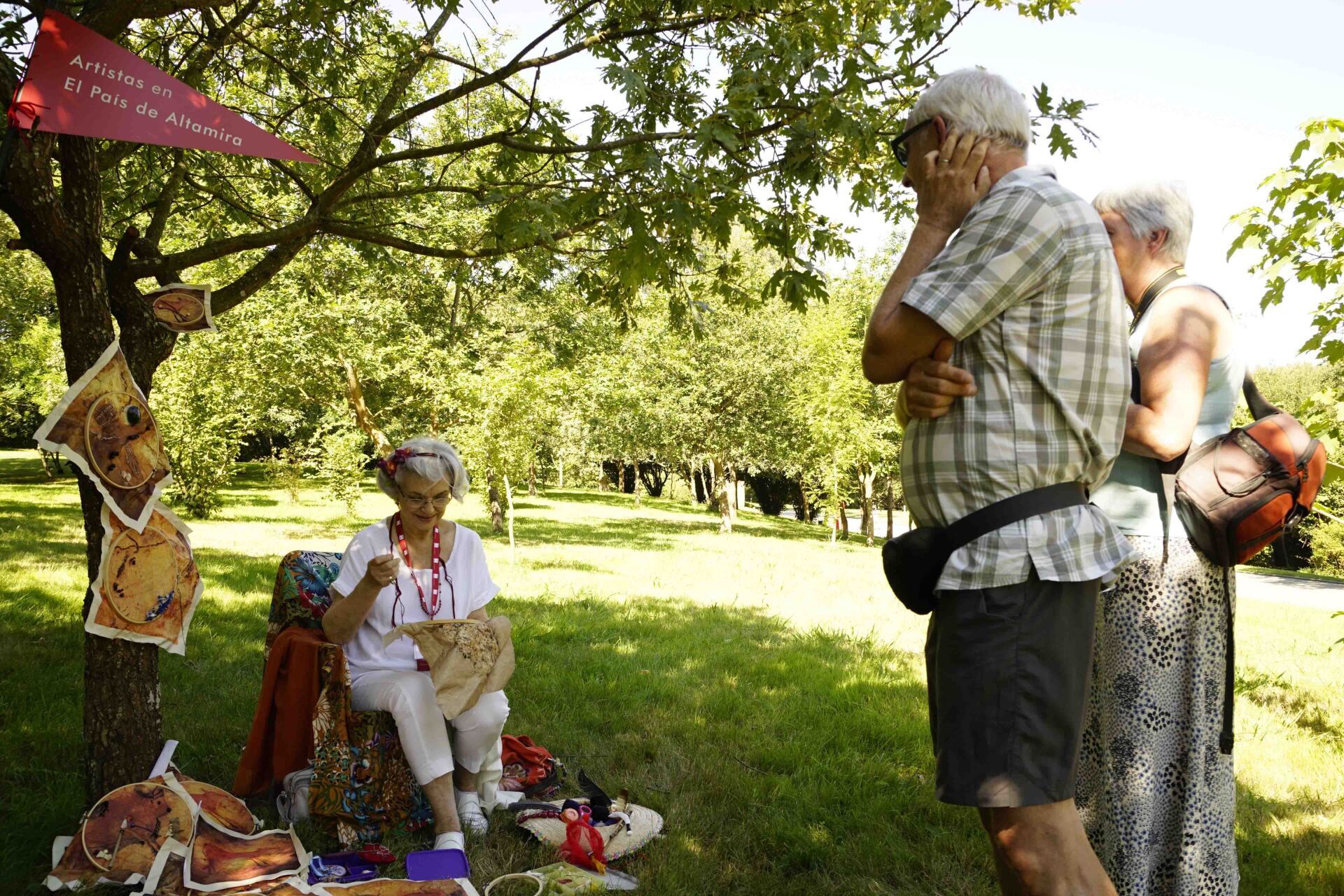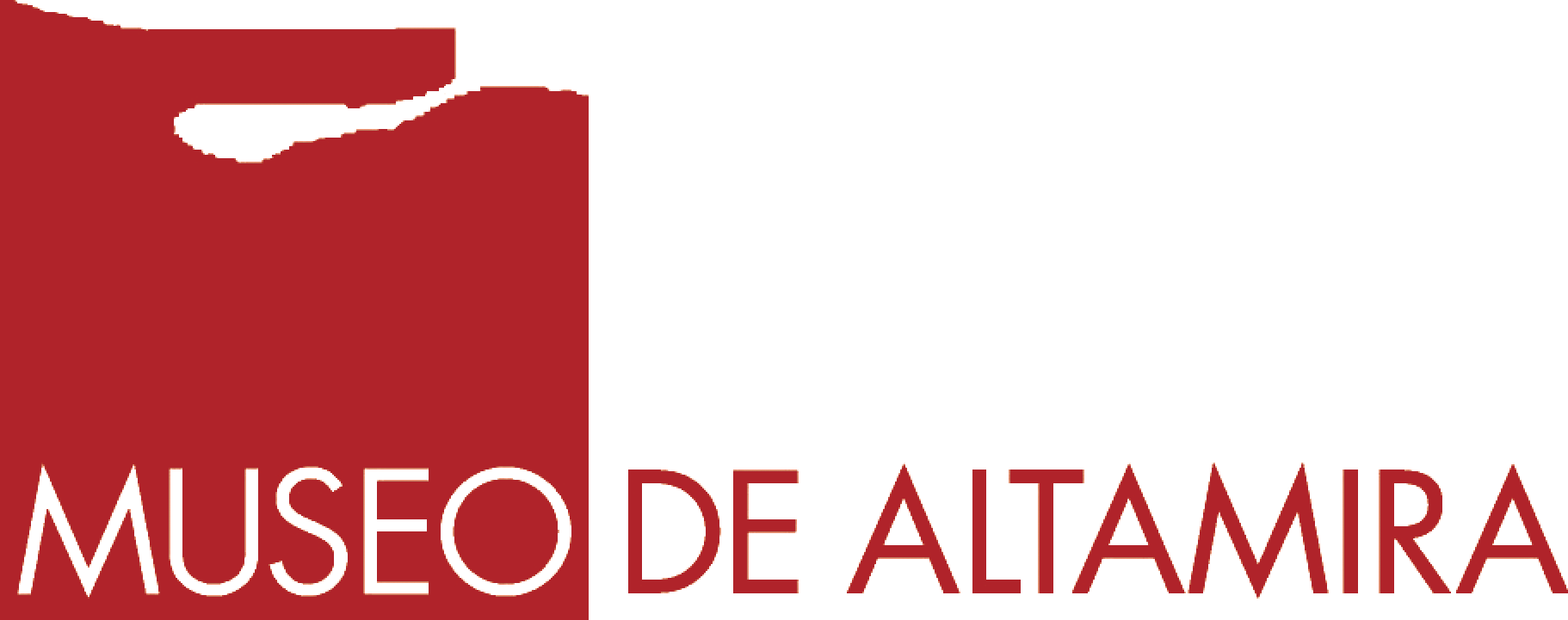Gigliola Zecchin
She is a writer and cultural journalist for radio and television. She was born in Vicenza (Italy).
She studied modern letters at the University of Córdoba, Argentina.
Since 1987, she has developed the Department of Literature for Children and Young People of Editorial Sudamericana, in which she edited 250 titles for ten collections.
As an author, in this genre, she twice received the “White Ravens” International.
The collections of poems: Paese, arte povera; In Movimiento (finalist for the Olga Orozco Int. Award) and Venetian Haikus, and the art book: What a dream is this, made in Cantabria, Spain. Ediciones en Danza published her Poesía reunida 2000-2020.
Distinguished as "Outstanding Citizen of Culture" by the Legislature of the City of Buenos Aires, and her hometown, awarded her the gold medal for effort and work. She has received the Medal of “Cavaliere” from the Italian Government.
She is a full member of the Argentine Academy of Communication Arts and Sciences.
Saying in Altamira, the roof that shelters prehistory (NAT Art Residence - Artists in the Country of Altamira - 07/2022)
Brief stories at the origin of the great story of art.
Invent stories in the shadow of an indecipherable heritage.
Open the plot, thread the thread of the imagination (they invented the needle thousands of years ago), they went out to hunt brandishing the sharp Spear.
Or was it the other way around? Who lit the fire?
Did they beget their children out of love?
They defended their cave, from what dangers?
Did they own a language?
Surely…
Altamira keeps an unrevealed secret in her imposing language.
The polychrome bison, the red horses, the indecipherable signs speak of an ancient thought that precedes us.
And it opens the big question.
Why did they do it? this is the big question
My project seeks meaning in that beauty. Play with the invention of short texts that I illustrate by embroidering papers and fabrics.
Leather cuttings, crystals, polished bones, pieces of mother-of-pearl, small wood carvings, flint shards.
Black thread, colored threads.
Grass stitch. Back stitch. Chain stitch.
Shadow stitch.
Time is getting longer and I put my patience as a tribute in these long summer days. It is a tribute to the country of Altamira.
Why do I do it?
Because the art.
The art makes us live more fully.
The art makes us humans. Brothers.
Migrants
Image: National Museum and Research Center of Altamira, Ministry of Culture and Sports, Government of Spain.
Decorated shoulder blade. Altamira Cave © Museo Altamira Photo V. Schulmeister
Migrants
(Audio text)
We are all migrants. Animals, ancient birds, solitary pilgrim walkers. Towns that marched with the color of their skin, the house on their backs, their memories.
We drew the compass rose in the air before discovering the beautiful geometry of a rose, before they made us bleed for its thorns.
We come down from the mountains, we cross the rivers and the valleys eating the wild fruits of life.
The paths crossed, the first fire was lit at his side, in the cave (outside the cold) the stone was carved and before the iron learned to kill.
With its rust, with the coal from that fire and with the hands of memory, we leave a mark here in Altamira.
No one will know why we migrated again.
Ours are those red horses, the winged signs.
The hind and the bisons, without looking at each other, will wait for centuries, perhaps someone will one day be able to decipher the mystery.
If that happens, let me know.
Knowing, protects migrants from thirst, hunger, bad weather.
Even if they keep walking until the end of the story.
The food
Image: National Museum and Research Center of Altamira, Ministry of Culture and Sports, Government of Spain
Hind. Altamira Cave © Altamira Museum Photo P. Saura
The food
(Audio text)
The doe led the swift herd of females. The hunters were on the prowl. With their arms raised and their long weapons.
The fawn was in the center and was running with difficulty. The hoof had tripped over a root, the pain held him back, back, he was left alone disoriented. He pricked up his ears, he didn't know how to find a hiding place. In the immense silence, only the birds could be heard.
Sounds now, coming from the cave. As soon as the children saw him they surrounded him. The limp made him walk suspiciously with his nose held high. Searching for the scent of his mother.
The children had never had a puppy. The happiness was absolute. They led him to the corner where they had been playing and helped him lie down. The fawn let himself be. Curious eyes, by voices and gestures, timid hands that caressed him, gave him water.
The adults spied on the patrol.
At bedtime they wanted to continue taking care of him, and they stayed next to that living and throbbing toy, they wanted to sleep very close.
At dawn, when they were waking up. The fawn was gone. They went out to look for him, cautiously, in the semi-darkness. They were trying not to make any noise so as not to scare him.
The older ones seemed distracted, each on their morning homework. They did not stop watching them. The outside was always dangerous.
The children knew it and one by one they returned to the cave to their little obligations, under the protection of their family. One cried.
Despite the cold, the food was being prepared far away. The campfire was already burning with the small prey. They hid his skin.
Food sustained the life of the band. It was more important than the game and the joy.
The hunter
Image: National Museum and Research Center of Altamira, Ministry of Culture and Sports, Government of Spain
Female bison. Altamira Cave © Altamira Museum Photo P. Saura
The hunter
(Audio text)
She saw him from behind. He was trying to light the fire, a wooden rod spinning on birch bark.
The sparks did not come out. He looked at his hands.
The one that came from another cave, she squatted down, took the wood and nailed the point in its place, she worked skillfully.
Soon the thread of smoke came out, the sparks flew and the dry leaves caught fire.
He looked at her between hurt and open-mouthed.
She, her cheeks burning, took refuge under the shelter of her people.
The next day he looked for her and began to flutter around her. She was enveloped in his scent and without thinking she began to move her arms as well.
Delighted in something new, they looked at each other.
Her mother understood. That's why they had come from one cave to another.
She gave her daughter her trousseau. Two goat skins sewn together with a bone needle. A fine leather dress embroidered with shells. And the stone bowl.
Sometime before she had marked the sign on her forehead, at the foot of the female bison, to announce that she was already a woman and she had drawn a red line around her waist. When the line broke she would be pregnant he let her know.
Now he had to prove that he could be a hunter.
According to ritual, a man from her band, perhaps her father, handed him the staff with its sharp assegai.
He, bending down, took it roughly and held it up.
If he got a kill, she, who had lit her fire, would stay.
He walked through the oak forest without looking back.
The story doesn't tell if he came back.
The desire
Image: National Museum and Research Center of Altamira, Ministry of Culture and Sports, Government of Spain
Bison head in black. Altamira Cave © Altamira Museum Photo P. Saura.
The desire
(Audio text)
All his life he had tried to draw a bison. He only knew how to hunt him down, be the most accurate and see him fall, see his blood.
Now old and tired he folded his own bones and though he could hardly see, he tried. In the agitated light of the lamp he chewed the grass and the bitter fungus that helped his hand and his mind in the mist of the stone. He tried.
That was the nose, wet and flat. Yes. The brief and almost friendly mouth. Yes, well marked, the hump of his profile, in a more diffuse way the crest. His fingers trembled and he took a deep breath before tracing the threatening horn.
The ear, almost human. Finally the eye, to the eye he took special care.
A look to understand everything and at the same time to feel alone.
There was no coal left. He had no energy left.
In the icy dawn he set out on the journey. He just wanted to leave. He left the warmth of his people, his cave. And he walked, walked towards the endless water.
A moon, a sun that fell ripe, the sand and the blue, a kind of soft sky into which he threw himself defeated.
Centuries and centuries passed. It was then that he emerged from the foam. Not him, just his spirit. Light, invisible.
He walked, walked towards the cave.
One sun, two moons. And the strange vision of a huge, strange stone, and beings covered in colors.
It wasn't his cave. It wasn't his tribe.
He avoided them with the patience of spirits until he discovered the gap between the bars, went through it…and into the dark. Seeing everything as the spirits see it, he looked for his drawing of the bison. He shrank to a shimmering black dot as a spirit can and came to rest there at last in the meek pupil of his creature.
From there he looks at us, forever.
The leader
Image: National Museum and Research Center of Altamira, Ministry of Culture and Sports, Government of Spain
Black bison. Altamira Cave © Altamira Museum Photo P. Saura
The leader
(Audio text)
Black. Just charcoal and firm strokes. It's how everyone sees me among ancient red horses, polychrome brothers, the pink hind, so beautiful. And me, with my dishevelled bison crest.
Being the leader of the pack is what I got. Suddenly, in a stampede, everyone leaves behind someone who is advancing. I did that… without looking to the sides, it was an ambush.
We made the earth tremble, we are giants but we know how to run, climb, jump over streams and large stones into the depths of the woods.
They, erect on two fragile legs, chase us, watch us, while our persistent hooves dig under the snow or break the ice. We look for roots, mosses, green shoots...
We were few, we were their livelihood.
Women, men and children. They all depended on hunting.
We did not eat men or any animal, we only chewed at ground level.
We didn't deserve death. That was the reason for the meeting. The herd came to see me, with few pups, born in the spring. They entered the mouth of the cave, one after another. While the humans slept.
My tribe made a decision. I well remember the breathing of those who remained and I agreed. They would have to look for a forest free of hunters, they had to stop fleeing, stop being afraid.
Their departure preceded the abandonment of the gang, they too would leave the cave. They will have looked for another refuge, other forms of survival. They too would have to go to other lands. Of which I know nothing.
Now I am here, painted with art by the very hands that raised the sharp flint that hurt us.
Here I stayed. Like a message to the future. Like an exvoto. Who knows what promise. Black, charcoal and firm strokes.
The dream
Image: National Museum and Research Center of Altamira, Ministry of Culture and Sports, Government of Spain
Reclining bison. Altamira Cave © Altamira Museum Photo P. Saura
The dream
(Audio text)
In a hole in the ground, cowering in on itself, the bison fell asleep.
He dreamed of a woman.
The woman in the dream was making a small bed of moss at the foot of a tree.
She hugged her trunk and rested her swollen belly against the bark. She started to push. From time to time she complained with short growls.
Those growls woke him up.
He opened his eyes and saw her very close to him, she was the woman from the dream, she was still clinging to the tree, she was breathing hard and she kept pushing.
The bison stood spying on her.
Her face flushed red, she snorted hard until she let out a bellow.
The baby came out little by little, first the head and then the barely bloody body, it slid to the ground.
The squatting woman tore a long belly from her that had him tied to it. She wiped it off with a handful of moss and she scooped it up into her arms.
The bison closed his eyes, he didn't know if what he had just seen was part of the dream or if the creature that he began to bawl like a little animal was real.
He remained motionless in the hollow of it. He didn't want to scare them.
Especially the mother who had just given birth.
The flight
Image: National Museum and Research Center of Altamira, Ministry of Culture and Sports, Government of Spain.
Red sign. Altamira Cave © Altamira Museum Photo P. Saura.
The flight
(Audio text)
The man who beat his chest when he was very lonely.
The same one who jumped on one foot and the other when he felt happy.
He picked it up from the ground and weighed it, he was light.
Long and smooth, polished by time, with small breaks.
Examining it carefully, he thought he recognized in the bone the axis of a falcon's wing.
He blew on it to remove the dust and vermin that might be in its hole
He blew out and to his surprise the breath became sound.
He covered her orifices with his fingers and the sound changed.
He jumped on one foot and on the other foot.
He hid his find between the skin of his clothing and his own skin.
He often returned to the place where he had found it.
He was blowing. Sad sounds and glad sounds came out.
Bass and delicate.
When he felt that he had discovered something so beautiful.
Almost as beautiful as the song of birds...
He jumped excitedly
Until one day a long time later, he sat at the mouth of the cave to share his flute music.
Since then, when he blew the bone, some danced.
Sometimes a falcon would spin in the air with its squawks, celebrating.
The healer
Image: National Museum and Research Center of Altamira, Ministry of Culture and Sports, Government of Spain
Black signs. Altamira Cave © Altamira Museum Photo P. Saura
The healer
(Audio text)
The path of herbs opened at her pace. Mushrooms and rare fungi.
The cauldron of her memory carried her to her mother, from long time ago.
To those messages that she received in whispers from her, since she was little.
She gathered the roots of the columbine that cured bleeding gums.
She plucked shoots, those scaly leaves of the cypress would serve as relief to varicose.
She drinks the infusion several times from sunup to sundown, as she remembered it.
She found a bundle of callera grass, good for applying to cuts.
Just as they had always done, that night of the full moon she would fulfill the ritual: they had to put the herbs around her arranged in her horse hide, stretch out her arms to the sky invoking that disc of luminous ash. More subtle than the sun, owner of fire.
She needed to empower her hands, still so young.
Suddenly, a dark shadow approached the moon, she began to bite it little by little until she swallowed it completely.
She, in the dark night, believed that the moon had died, like her mother. She ran into the cave dragging the leather behind her until she reached the foot of the secret code. She, wrapped in it, fell asleep defeated by sorrow and fear.
In the morning she came out of the fog of sleep hearing her name. She saw how they came towards her, one screamed in pain, he had a badly injured leg. The others saw her wake up and looked at her strangely.
It is that she seemed to be another, maybe she was.
The eclipse had disturbed her in such a way that her black hair had turned gray, in such a way that they finally saw in her the heiress of her mother, the healer.
What a dream is this (Art in the Origin - 2019)
Unexpected road
I feel, think, touch.
I look in the eyes the origin.
Before me, thousands and thousands of years, uncountable centuries.
Art, art as destiny. I am free. I choose words, I put into words the enigma, the luminous signs of the species. I imagine them creating.
They ask me to draw. I only have blue ink, lipstick, eyeshadow and my fingertips. I tremble while I make-up small images.
Translation by: Julia Garzón Funes
Click on the arrows for full view



